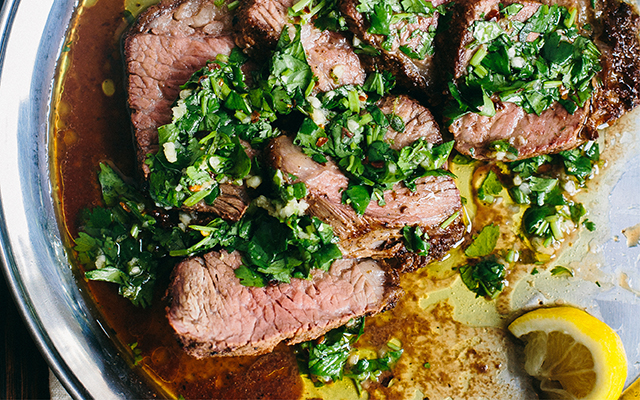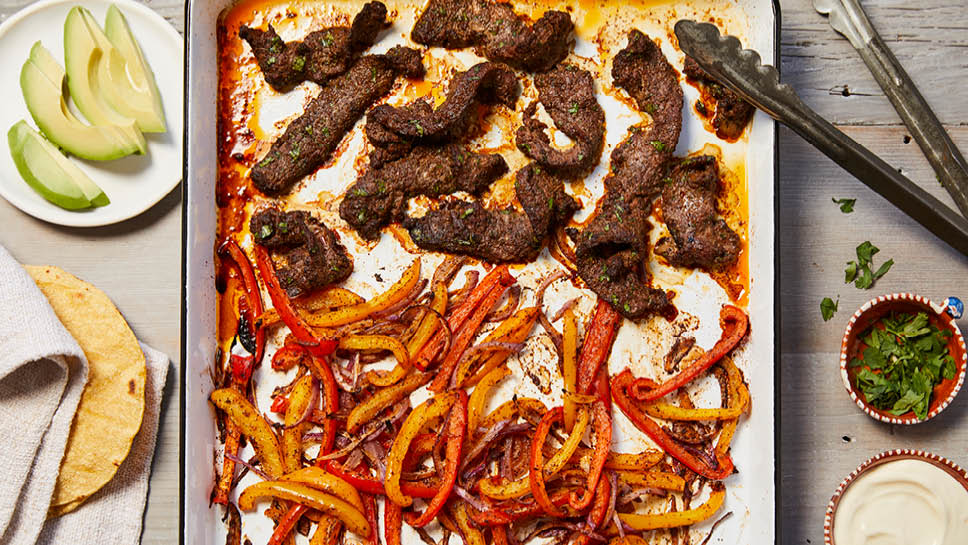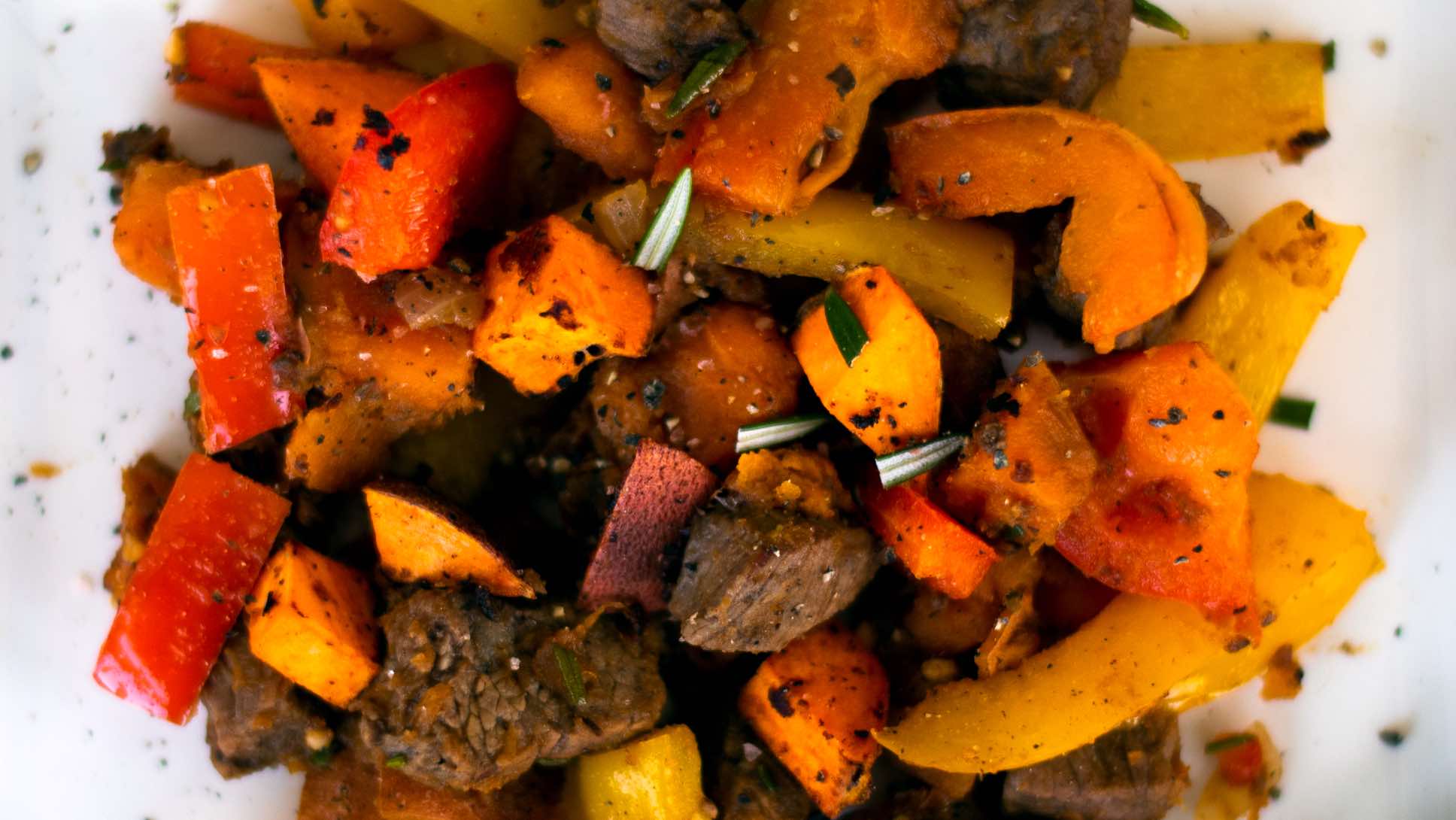Cooks in Argentina perfected grilled meats long before Europeans introduced cattle there. A more authentic heritage-focused recipe would call for guinea pig — but that’s tough to find in a grocery store. This recipe uses cuts of grassfed beef such as tri-tip. The cilantro and rosemary give it a new twist.
Makes four to six servings | Prep time 10 minutes, plus time to heat the grill | Cook time 30 minutes, plus 10 minutes resting time
Ingredients
For the steak and marinade
- 1 tbs. kosher salt
- 1/2 tbs. black pepper
- 1/2 tbs. paprika
- 2 tbs. olive oil
- 2– to 4–lb. beef tri-tip or sirloin steak (look for 2– to 3–inch-thick cuts)
For the chimichurri
- 3 cloves garlic, minced
- 1 cup chopped fresh cilantro (about 3/4 bunch), stems included
- 1 tbs. chopped fresh oregano or rosemary leaves (from about 2 sprigs)
- 2 tbs. red-wine vinegar
- 1/3 cup olive oil, or more to taste
- Salt to taste
- 2 pinches black pepper
- 2 pinches crushed red-pepper flakes
- Lemon wedges
Directions
- Combine the marinade ingredients in a small bowl. Rub the marinade over the steak and set aside. Warm up the grill for indirect moderate heat: If using a charcoal grill, bank the coals to one side; if using a gas grill, ignite the burners on one side.
- Place the steak on the cool side of the grill and cook until it reaches an internal temperature of 110 degrees F, about 25 minutes. As the meat cooks, combine the chimichurri ingredients in a bowl.
- Move the steak to the hot side of the grill and cook on each side until lightly charred, about two minutes per side. (This technique of cooking first and searing second is called a reverse sear.)
- Remove steak from the grill and let it rest for 10 minutes before slicing against the grain. Serve with the chimichurri and lemon wedges.
Why No Numbers? Readers sometimes ask us why we don’t publish nutrition information with our recipes. We believe that (barring specific medical advice to the contrary) if you’re eating primarily whole, healthy foods — an array of sustainably raised vegetables, fruits, nuts, seeds, legumes, meats, fish, eggs, whole-kernel grains, and healthy fats and oils — you probably don’t need to stress about the numbers. We prefer to focus on food quality and trust our bodies to tell us what we need. — The Editors




